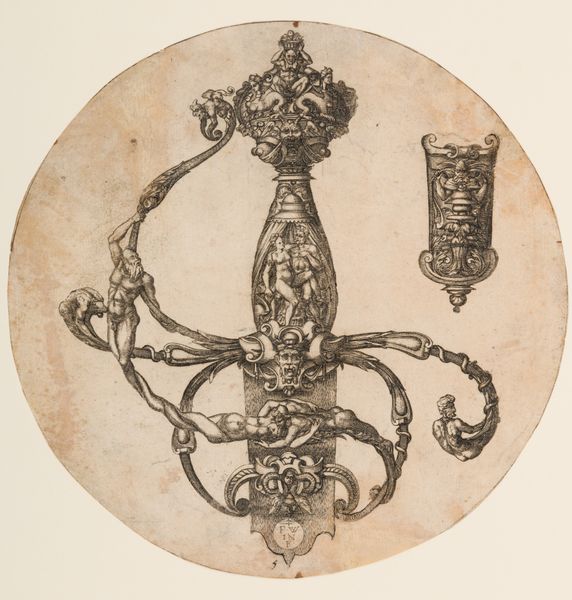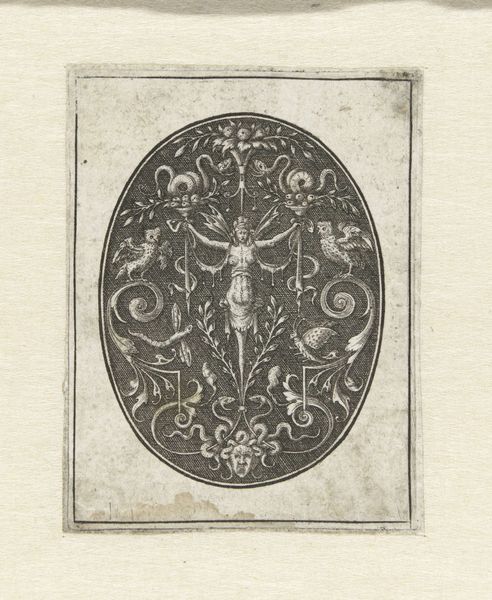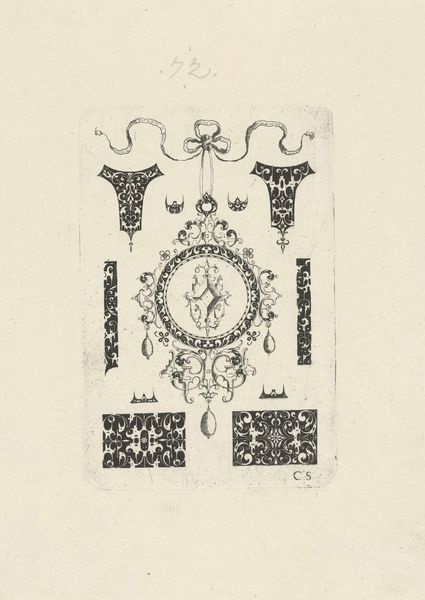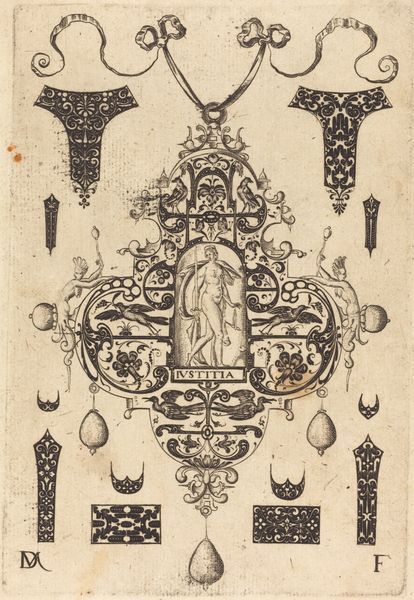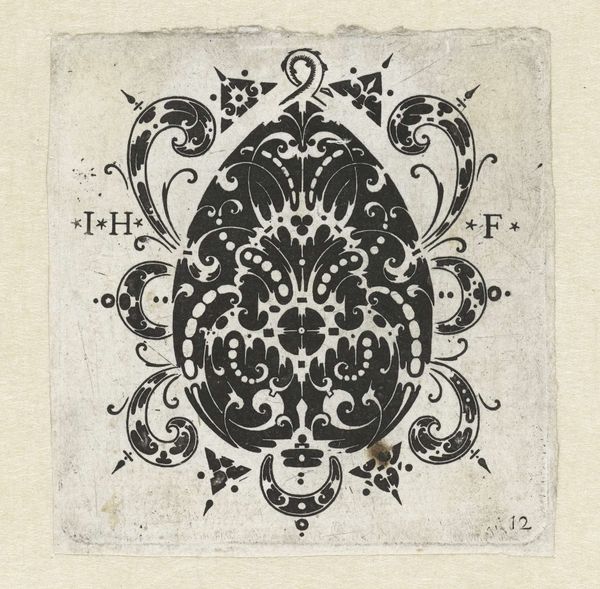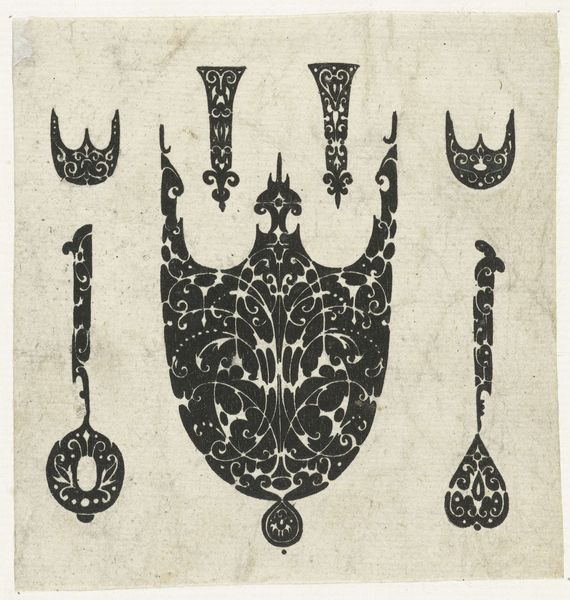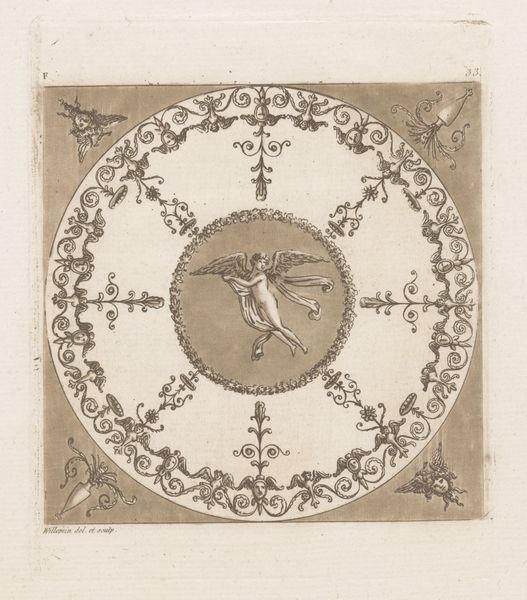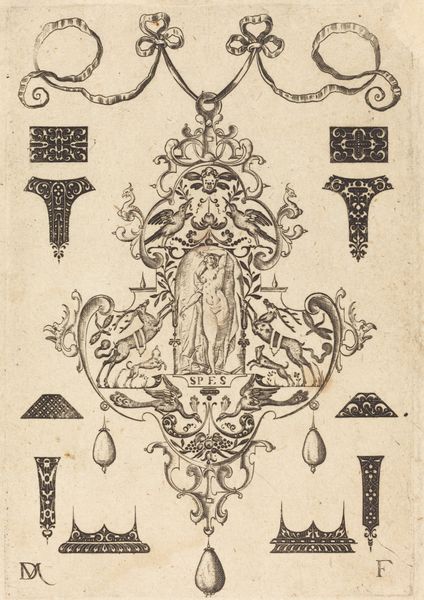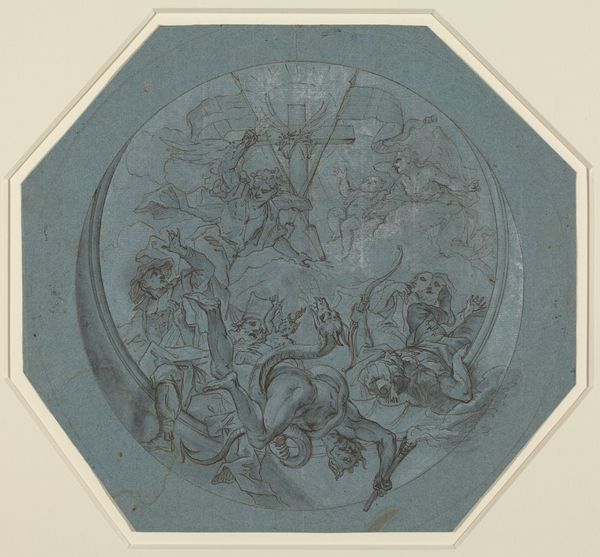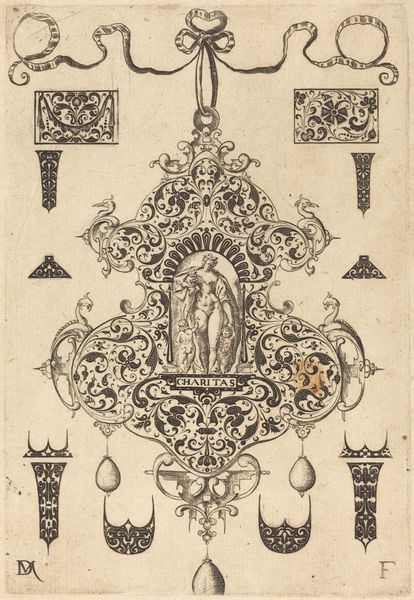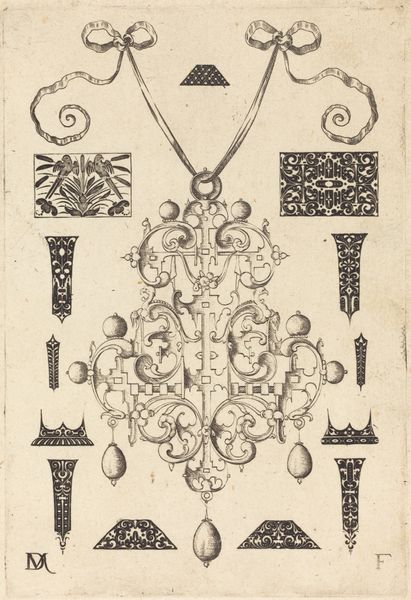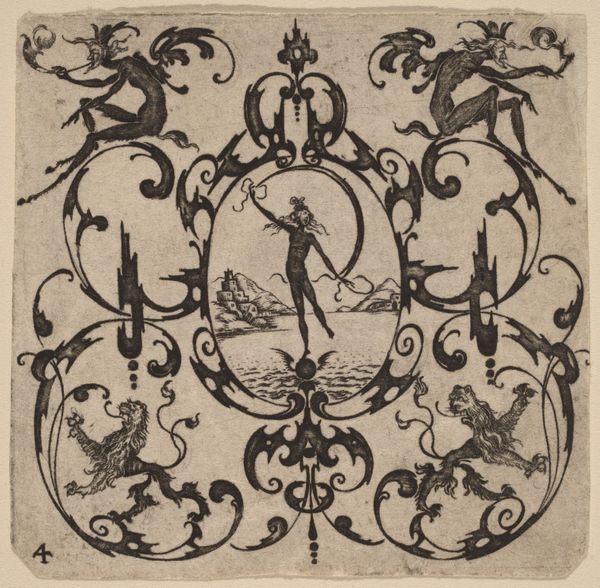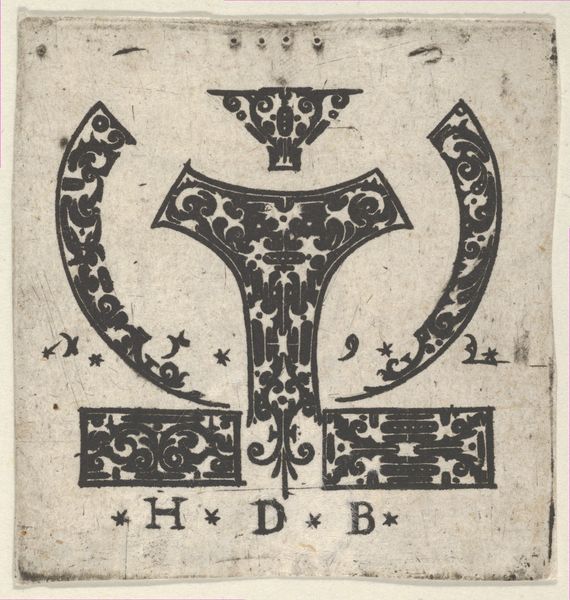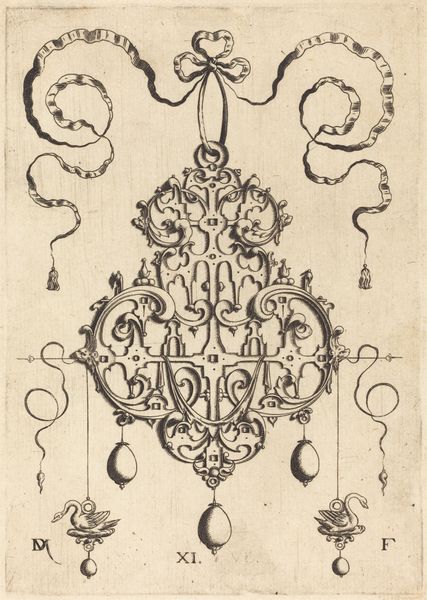
drawing, ornament, print, etching, engraving
#
drawing
#
ornament
# print
#
etching
#
figuration
#
11_renaissance
#
history-painting
#
italian-renaissance
#
engraving
Dimensions: Sheet: 7 5/8 × 7 11/16 in. (19.3 × 19.6 cm) [diameter]
Copyright: Public Domain
Curator: Oh, how sinister! It's intricate and a little disturbing, actually. What a fascinating contrast – such precise detail rendered for something intended for…well, violence. Editor: That's an intriguing reaction to this design for a sword hilt, created by Pierre Woeiriot de Bouzey II around 1550 to 1560. You are looking at an etching; essentially, a print, made by incising a design on a metal plate. The print before us here at the Metropolitan Museum offers an early study in reproducibility and accessibility of designs. Curator: Right, so not the sword itself, but the blueprint for a beautiful, lethal thing! The level of detail—the tiny figures entwined with serpents, that horse head—it almost romanticizes conflict. What purpose did such intense ornament serve? Editor: Well, it certainly elevated the object beyond mere functionality, becoming a status symbol, even a miniature artwork in itself. The use of etching as a process—a relatively new technology at the time—allowed for incredibly intricate and reproducible designs, enabling artisans across Europe to incorporate the latest styles into their work. The hilt as envisioned uses luxury materials, yes, but also skilled labor, and that speaks volumes about commerce and artisanal economies in the Renaissance. Curator: You know, when I look at this, I think of power…but also vanity. A display of wealth and perhaps even intimidation through sheer artistry! The little shield included is a perfect additional surface to showcase the owner's story. It's like Renaissance "bling." Editor: That "bling" reflects not only personal status but also the development of proto-industrial practices. The print functions as an instruction manual. The hilt, likely forged in steel, demanded expertise in casting, chasing, and finishing - a confluence of material knowledge and social display! The sword wasn’t just about combat, it was a statement of craftsmanship, lineage and perhaps a subtle demonstration of economic might. Curator: It's hard to believe so much history is held within a single etching meant for an object used in battle! Editor: Indeed. Thinking about the print alongside the potential completed product reminds us that even designs for weapons tell stories of artistic ingenuity and broader economic networks.
Comments
No comments
Be the first to comment and join the conversation on the ultimate creative platform.
